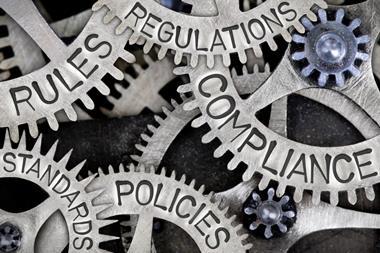The electronic age has added new challenges and risks to the process of legal disclosure say Philippa Bennett and Reza Alexander
Any organisation that has been embroiled in litigation will know that the process of preparing for disclosure, and disclosing documents to an opponent can be expensive and time consuming. Very often it will be difficult to identify who holds or has access to relevant documents, where they are stored and who is able to comment on them. These issues have always been faced by lawyers and their clients in relation to hard copy documents. However, the onset of the electronic age has added new challenges and risks to the process.
The new part 31
The issue of the disclosure of electronic documents in litigation was addressed in 2004 by a commercial court working party chaired by the Honourable Mr Justice Cresswell. That report led to amendments to the Commercial Court Guide and, eventually, to the revised practice direction to Part 31 of the Civil Procedure Rules (CPR), which came into force in the UK on 1 October 2005.
The changes to the Part 31 practice direction are fundamental and should not be underestimated. It is essential for anyone who may be involved in litigation to be aware of its ambit.
Prior to 1 October 2005, Part 31 of the CPR already outlined the duties of a party to litigation in relation to disclosure of documents to its opponents. A party has to make a reasonable search for documents which either support or harm its case or its opponent's case. So far, so good.
However, there has always been uncertainty on the part of legal practitioners and commentators as to how these rules should be interpreted with respect to electronic documents. For example, what electronic storage media and information should fall within the definition of 'document'? Should the 'reasonable search' be interpreted differently in the case of electronic documents? The new practice direction to Part 31 seeks to resolve these uncertainties.
Key provisions
The key provisions that need to be noted by clients and their lawyers are as follows.
- The definition of documents now includes electronic documents, not only those that are readily accessible from computer systems or other electronic media, but also those stored on servers and back-up systems. Importantly, it also extends to electronic documents that have been deleted and to metadata (embedded data not visible on the document's face, such as previous amendments).
- In deciding on the reasonableness of the search for electronic documents, regard should be had to the ease and expense of retrieving them, including how accessible they are, their location, the likelihood of locating relevant data, the cost of recovery and the cost of disclosure.
- It may be reasonable to search through potentially relevant electronic documents using key word searches rather than reviewing the entirety of each and every document.
- The parties should discuss any issues arising in relation to the search for and preservation of electronic documents prior to the first case management conference (which usually takes place within three months or so of a claim being issued). Any disagreements between the parties should be resolved at the first case management conference if possible.
- The parties have to sign a newly worded disclosure statement explaining their electronic disclosure actions and including a description of all electronic documents not searched for.
While parties may hitherto have been able to hide behind the ambiguous wording of Part 31, it is abundantly clear that this will no longer be possible. As soon as a dispute is on the horizon, issues relating to the disclosure of electronic documents will have to be dealt with head on, not just between client and lawyer, but also between opponents.
Costs risk
Although not specifically adopted in the new rules, the Cresswell report sets out a stark warning to parties about possible costs penalties in relation to the electronic disclosure process:
'At the conclusion of the trial (or earlier if appropriate), judges should give separate consideration as to the cost incurred in relation to e-disclosure and who should pay those costs, having regard to the reasonableness and proportionality of the disclosure requested and given, the relevance of the disclosure given or ordered to be given to the issues in the case presented at trial, and the conduct of the parties generally in relation to disclosure.'
This guidance should not be ignored. It is prudent to assume that it will provide a reference point for judges when dealing with the new rules.
Practical steps
Armed with the knowledge that these provisions are important and need to be acted upon at an early stage in litigation, what should clients and lawyers do when faced with a dispute involving the disclosure of large numbers of electronic documents? When should communication with an opponent's lawyer start? Should external e-disclosure experts be instructed by lawyers and, if so, when?
These questions can be answered by examining each constituent element of a typical e-disclosure project.
At the first sign of anticipated litigation, it is prudent to take immediate steps to preserve and prevent the alteration of all potentially relevant data and suspend all routine data destruction policies. Examples of the latter include suspending the rotation of back-up tapes so that these are not over-written, increasing the size of e-mail inboxes for key people and imposing a freeze on equipment that is to be recycled or repaired.
This in turn will involve contacting the personnel who are likely to hold relevant data. It will also involve obtaining an understanding of the document management policies in place to ensure that nothing is overlooked.
It is important for lawyers to get to know their client's IT personnel from the start. If the scale of the e-disclosure task and resourcing within the client allow, an 'IT champion' should be given specific responsibility for dealing with e-disclosure issues and for liaising with the lawyers.
Collection
It is vital that lawyers understand their client's IT infrastructure in order to be able to identify where potentially relevant documents are stored. This will be easier if an IT champion has already been identified.
The Part 31 direction specifically refers to PCs, portable data storage media, databases, servers, back-up tapes, off-site storage, mobile phones, laptops, notebooks, handheld devices and PDA devices, and so these should all be considered.
If a client has a good document management and archiving system in place, data collection is made much easier. For example, if e-mails are centrally stored, as opposed to located in Outlook, then they should be accessible from a server. This is far easier and cheaper than accessing each and every relevant mailbox account and possibly back-up tapes too. In particular, it can be very expensive to restore back-up tapes and time consuming to review them.
A key consideration is also the ease and expense of retrieval of the electronic documents, including how accessible they are, their location, the likelihood of locating relevant data and the cost of recovery. For example, it would probably not be reasonable to search for documents on certain storage media if the cost of retrieval was entirely disproportionate to the sums in dispute and the likelihood of locating relevant data was small.
Once all the sources that it is thought reasonable to review have been identified, all of the raw data needs to be copied electronically in such a way as to maintain its integrity and not alter it or the underlying metadata in any way. The key here is not to create an opportunity for an opponent to criticise the processes used. Very often, external e-disclosure experts are used for this task.
Processing
The vast majority of electronic data collected is usually irrelevant to the issues in dispute. Using a number of culling steps, the amount of data for review can be reduced considerably. Steps that are typically taken include:
- eliminating irrelevant operating system files
- de-duplication
- eliminating data outside certain date ranges
- culling the data generated by certain individuals
- eliminating data not identified by using key word searches.
There is software available to undertake these tasks. However, if the data is voluminous or in a complex format, it is probably prudent to use external e-disclosure experts.
Production and review
There are a number of options, depending on the volume and nature of the data. Issues to consider include whether the data is required in 2D format (for example read-only pdf files) or native file format. The latter is more desirable if it is thought necessary to review a document in its original format - for example, an excel spreadsheet and all its constituent 'layers'.
Where there is a large amount of data, a common approach is to use e-disclosure experts to upload the information onto a litigation support database and sort it according to required fields (for example dates, author, recipients, title). The data can then be easily reviewed by any number of lawyers and sorted into categories. Smaller numbers of electronic documents can be loaded onto individual desktops for review as an alternative to incurring the expense of a litigation support database.
Disclosure
The final form of the electronic documents disclosed to an opponent will depend upon the volume and nature of the data as well as any agreement in place between the parties. Printing them out is one option, but this is done infrequently. A more usual approach is for the dataset to be burned on to CD, or loaded onto portable hard drives.
Best practice
E-disclosure can be a complicated and time consuming process. It is essential that it is properly planned from the outset. If it is not, the court may take a dim view and may penalise offenders.
Bear in mind:
- the better the internal processes and policies for the management of electronic documents, the easier the e-disclosure task will be
- the guidelines in the Part 31 practice direction, and in particular the factors set out in order to decide the reasonableness of a search for electronic documents should always be considered
- the e-disclosure process is a horses for courses experience. Do not incur great expense when the circumstances of the case simply do not justify it.
- the requirement in the Part 31 practice direction, that the parties to litigation discuss e-disclosure issues before the first case management conference, means that the e-disclosure process needs to be considered as soon as possible after litigation is anticipated. Once an e-disclosure plan is drawn up, dialogue should then be started with an opponent's lawyers or their specialist IT advisers.
It is still early days, and further judicial comment on e-disclosure issues is awaited. However, adhering to the key rules of best practice should minimise the risk of criticism from an opponent or the court.
Philippa Bennett, Tel: 020 7796 6812, E-mail: philippa.bennet@dlapiper.com, is a litigation partner, and Reza Alexander, E-mail: reza.alexander@dlapiper.com, is a litigation support manager of DLA Piper's London office.



















